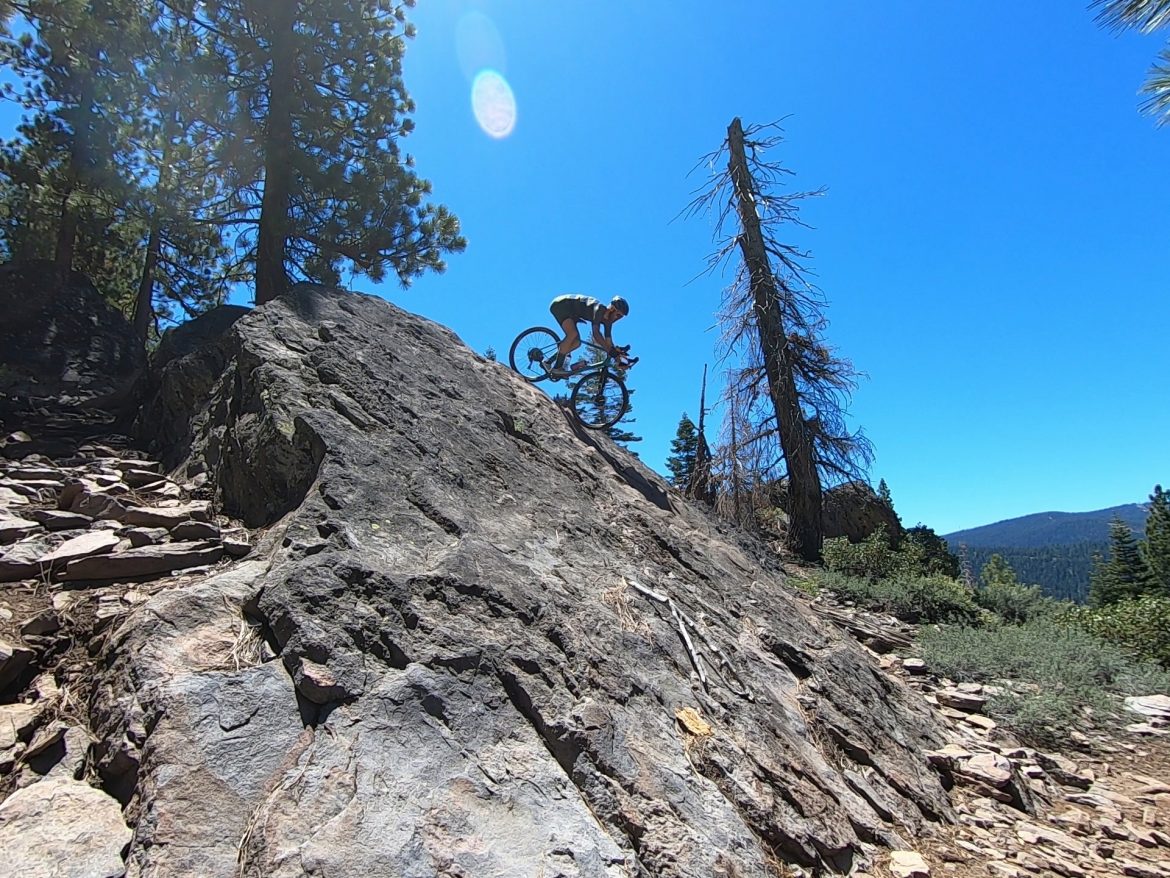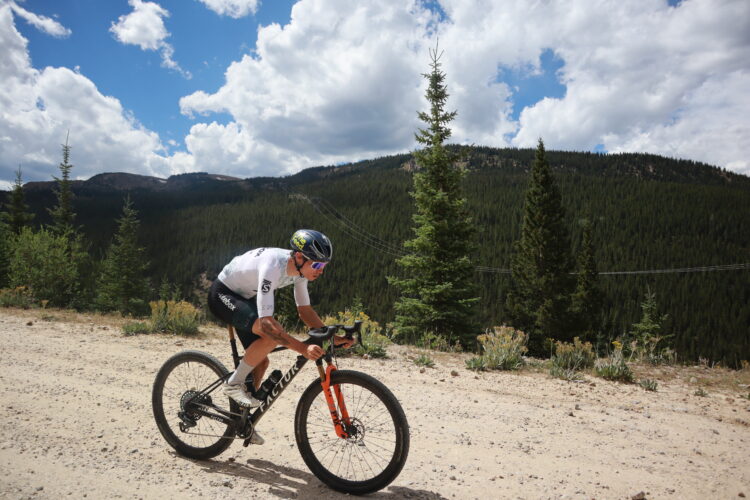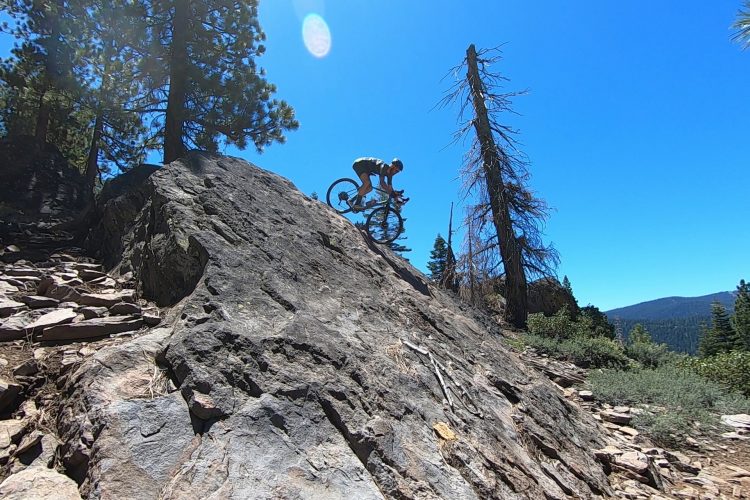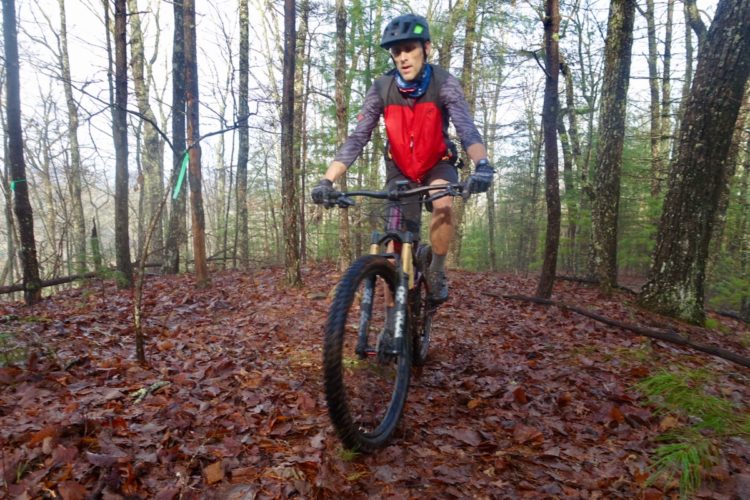
Last year’s Leadville Trail 100 race featured a mountain bike that caught the eye of many. Dylan Johnson raced the 100 miles on his Factor XC race bike, equipped with drop bars rather than traditional mountain bike handlebars.
And, he didn’t do too bad. Johnson was 17th overall, completing the course four minutes shy of the six-and-a-half-hour mark. This is nearly 20 minutes faster than his 2022 results, where he finished 20th overall and didn’t have drop bars on his bike.
After Leadville, Singletracks caught up with Johnson to ask about the race and his decision to ride drop bars in a mountain bike race. “I’m fully convinced that Leadville is a drop bar course, partially because I ended up getting my fastest time ever down Powerline with the drop bars, and my time down Columbine during the race was faster this year than it was during the race last year with the normal bars,” Johnson told us.
We imagine we’ll see Johnson on a set of drop bars at Leadville this summer. His success left us wondering if others would follow his example and throw some drop bars on their XC bikes. Pedaling and climbing with drop bars don’t seem to be that big of a stretch, especially at a race like Leadville, where dirt roads make up quite a bit of mileage. Descending singletrack, however, is a different story.
So we reached back out to Johnson to ask all about riding with drop bars and his secret for the downs.

Racing with drop bars
The decision to switch from traditional mountain bike bars was for two races. “I’ve been competing in the Lifetime Grand Prix for the past two years,” Johnson said. “That series has two races where a drop bar mountain bike makes a lot of sense—Leadville and Chequamegon.”
Adding drop bars to a mountain bike doesn’t enhance the traditional aspects of mountain biking, like climbing and descending technical singletrack. The drop bars help on the long, pedaling portions of these races where being more aerodynamic shaves off time.
“Depending on the rider, I think there is a good case to be made that drop bars are actually faster on both of these courses because of the improved aerodynamics,” Johnson told us. “I know it’s not usually something mountain bikers think about, but with an average speed of 16 to 20 mph for these races, it does make a difference.”
Johnson is right; we often only think of speed in terms of our “top speed” on our descent. But an average speed in the mid-to-high teens over 100 miles is maintained on the long grinds. In Leadville, Johnson’s pace was 15.51 mph.
It is these gravel road portions of the race where Johnson feels like drop bars give him an edge, allowing him to maintain higher speeds for longer. “I actually calculated the difference between drop bars and flat bars at Leadville,” Johnson said. “I pegged the difference at around six minutes in favor of the drop bars.”

What is the “right” terrain for drop bars?
While Johnson certainly saw the benefits of having drop bars on his mountain bike, those benefits were specific to the type of riding at Leadville. “I’ll be honest, as much as I promote my drop bar mountain bike, the only time of year I ride it is in the lead up to Leadville and Chequamegon to get used to it,” Johnson said.
A race like Leadville has long bits of gravel or dirt road, and the singletrack isn’t overly technical. “Leadville or Chequamegon and other courses that fall into the category of being rough and bumpy but don’t require a tremendous amount of handling skill,” Johnson said.
This is precisely what Johnson looks for when considering drop bars. His previous interview described Leadville as a race that “kind of falls in this gray area between gravel racing and mountain bike racing.”
Aside from the road grinds, where Johnson sees the benefit of drop bars, the climbing isn’t too technical. “I rarely find the climbs [at Leadville] to be an issue with drop bars,” Johnson said. Altitude seems to cause more trouble than the trail, with climbs above 12,000 feet. Johnson imagined that if the climbs were much more technical, drop bars would be a hindrance, not allowing for proper leverage or handling.

Tips for descending with drop bars
The same is true for descending. While Johnson clocked a faster time on the drop bars at Leadville, he again points out that the descents aren’t overly technical.
“For descending, drop bars will probably be just as fast, or faster, on more gravel or doubletrack style descents,” Johnson explained. “But, the more technical it gets, the bigger the disadvantage with drop bars is.”
Descending with drop bars is similar to descending on traditional mountain bike bars—pick your lines, regulate speed and braking, maintain control, etc. However, switching to drop bars takes considerable adjustment and requires time on them.
Hand placement
Where you place your hands on the bars can be crucial for descending. With drop bars, riders typically have their hands in two positions: on the drops or the hoods. The drops are the bottom, curved part of the drop bars, and the hoods are the area just above the drops and brake levers.
“You almost always see off-road drop bar users descending in the drops,” Johnson explained. “I get why this is most people’s instinct—you have a better grip on the bar and control of the brakes in the drops. There is one exception, though—cyclocross. The fastest cyclocross racers, arguably the best off-road drop bar riders, almost always descend in the hoods.”
Johnson noted this and incorporated it into his drop bar descents. “I almost always descend in the hoods. The main reason is that it puts my body in a better position for descending with my weight further back, making handling easier.”
Component choices
Having your hands on the hoods limits your access to the brakes, not allowing for a proper pull on the lever. This is a risk Johnson is willing to take, especially as leverage has improved with systems like Shimano GRX.
“With modern-day hydraulic disk brakes, the braking is really not compromised much either.”

Obviously, you can put drop bars on any bike, but we’re unlikely to see most mountain bikes equipped with a pair. Johnson shared a good rule of thumb: “I would say that if what you’re riding requires more travel than what a traditional XC bike offers, then you probably don’t want drop bars.”
For the 2023 Leadville race, Johnson rode a Factor Lando hardtail, although he mentioned he would also put drop bars on a full-suspension race bike. Rigid or with suspension, drop bars provided an advantage during the race.
Wider tires (and handlebars) help
So, why not race on a gravel bike? Johnson pointed out the advantages of the mountain bike platform. “The biggest is the wider tires,” he said. “The wider XC mountain bike tires provide better control and comfort.”
He went on to explain that lightweight XC tires may also be faster. “Many of them actually have a lower rolling resistance than their gravel tire counterparts,” Johnson explained. “This is because a lightweight XC tire can get away with using a thinner casing. Generally, a thinner casing means a faster rolling tire.”
The other descending-with-drop-bars tip Johnson provided was using wider drop bars. “I recommend running a wider bar than you would on your gravel or road bike,” Johnson said. “This should make the bike easier to handle.”
Everything has its limits
Drop bars on a mountain bike are very niche. It works at the race that is too gnarly for a gravel bike but too pedal-y for flat bars. It works at Leadville. Johnson doesn’t have drop bars on his mountain bike for the rest of the year.
“If I were doing more off-road bikepacking or lived in an area that lent itself more to the drop bar mountain bike, I would probably spend more time on it,” he said. Living in North Carolina, where the terrain is more technical than the Leadville 100, Johnson’s mountain bike has flat bars.
But, for Leadville, drop bars seem to work. Something Johnson really likes about them is that they are creative. It is a way to better his chances of winning with out-of-the-box thinking.
“Most of the time, races are won with your legs,” Johnson said. “I love to see when someone wins a race with their head.”



















